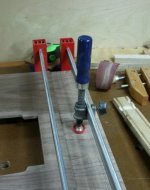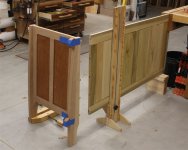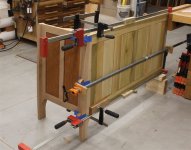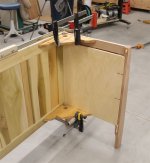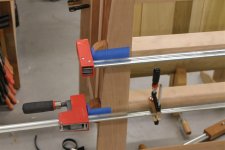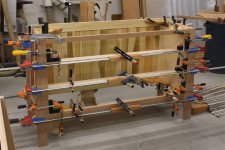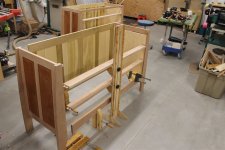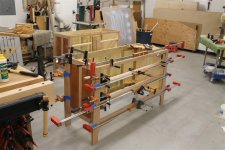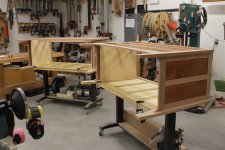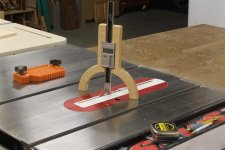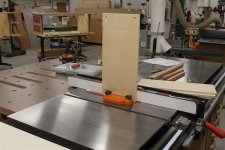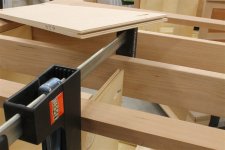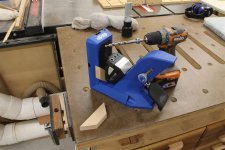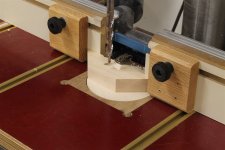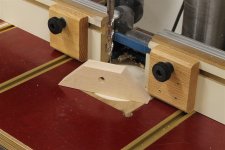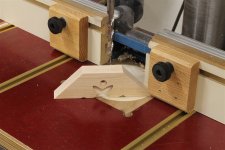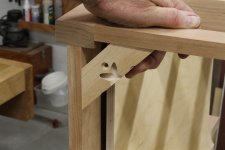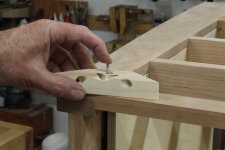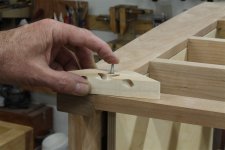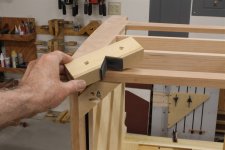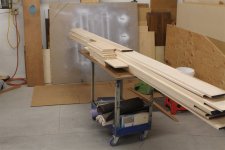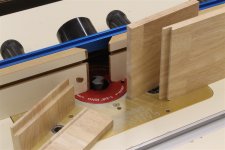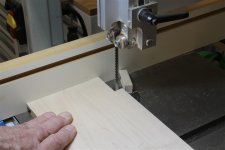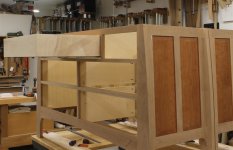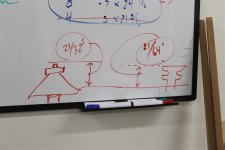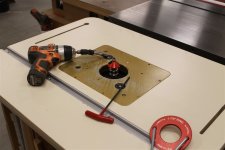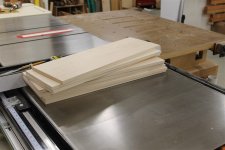The concrete got poured this morning . . .
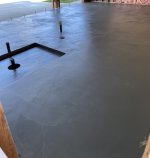
I am trying to time the completion of these with the completion of the remodel so I will have somewhere to put them. This gives me a relaxed time frame so here's some more detail on using scrap spacers for parts placement. I gather all sorts of random stuff that is good for nothing but single-use throw-away tasks like this. The spacer fits snug from either side of the divider panel. It is also cut square / perpendicular so it will work as a squaring aid.
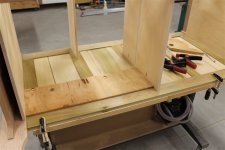
The same scrap is used for all dividers of that dimension. This makes lining things up easy even for me.

I normally use one piece of scrap and just cut it off as I require shorter and shorter pieces. For this matched pair of dressers it was easier to use two scraps for the different sized openings.
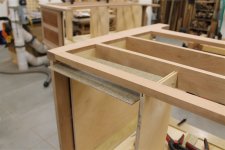
For setting the upper position I use spring clamps to hold the spacer in position. This pic shows how the spacer also acts as a squaring aid.

At any rate you end up here.
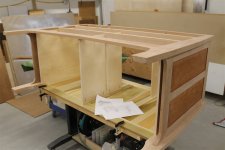
I had already dimensioned some trim for the vertical dividers. Here I use an FTG blade to groove them to accept the splines discussed earlier.
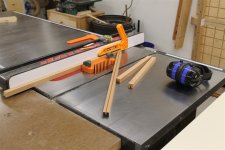
Once cut to rough length they are marked for each individual position. They are within 1/32" of each other but I have plenty of time so I fit them all separately.

I shoot them to fit.
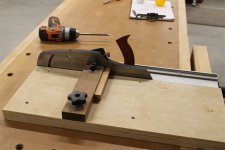
I then mark them so I don't mix things up.
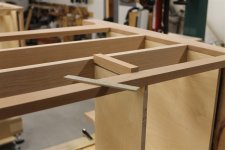
The vertical divider blanks get the profile I've established for the front presentation.

If anything ever deserved a "version 2" it is this guy. I have been milking this version 1 cobbled from scrounged particleboard throw-away furniture parts for years. The purpose is to put the same ROS surface prep on these parts as have been put on the others. The jig makes it easy to do this on short pieces. It sure beats holding them in your hand and trying to hit them with the ROS without fouling things up.
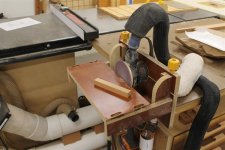
At any rate, once completed the spline is glued to the divider and the trim is glued to the spline, divider, and horizontal sections.

Seven more to go.
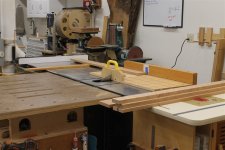
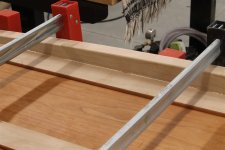
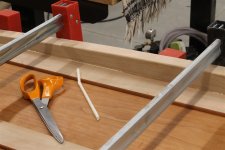

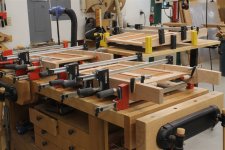




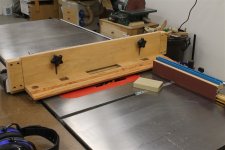
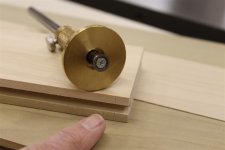
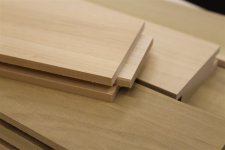
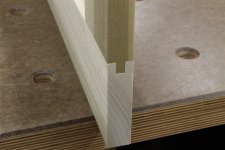

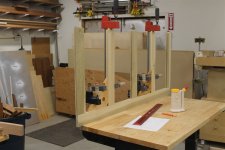
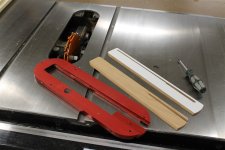


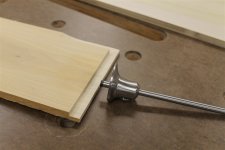
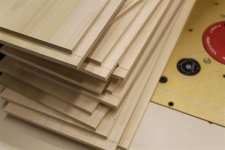
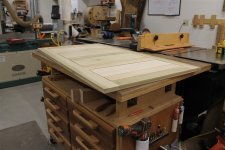
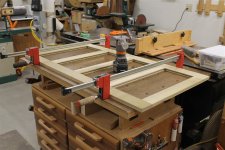
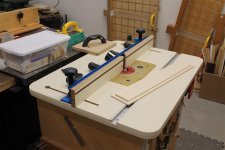

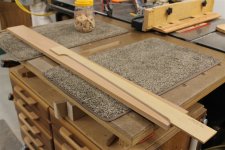
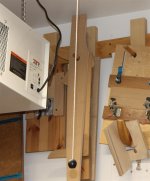
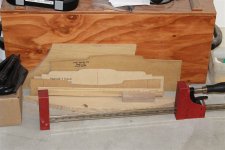
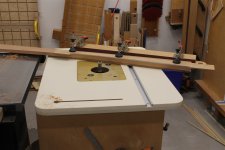

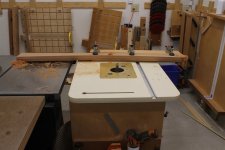
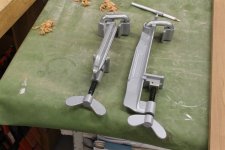
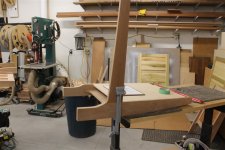
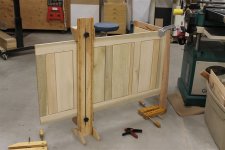
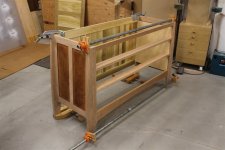
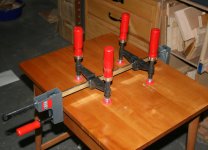 .
. 